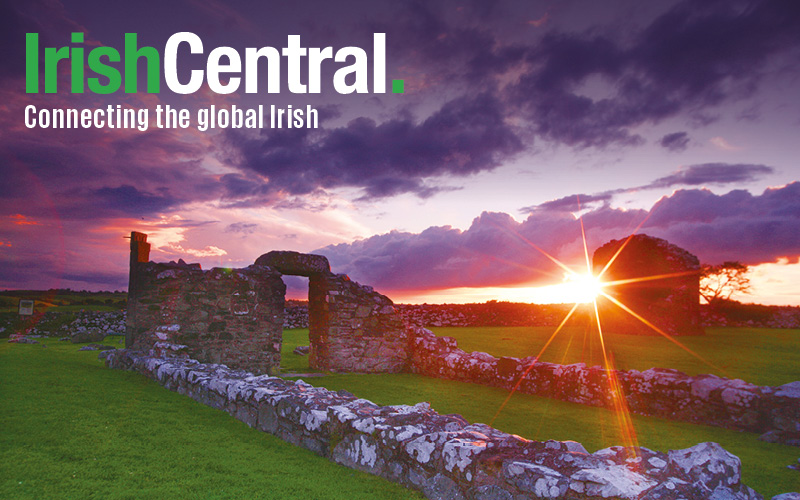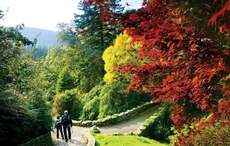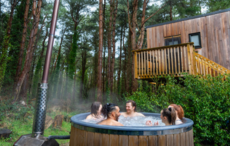A new exhibition "Ireland in Focus: Photographing Ireland in the 1950s" includes images from Dorothea Lange, and anthropologist, Robert Cresswell, as well as the largest exhibition of photographs by Henri Cartier-Bresson.
A major exhibition of important photographs which were taken in Ireland in the 1950s will go on display this week at the National Museum of Ireland - Decorative Arts & History, Collins Barracks.
The exhibition explores the way in which three photographers, from France and North America, saw and portrayed Ireland through the people they photographed and the places they visited, during what is generally regarded as one of the more challenging decades in twentieth-century Ireland.
Read more: New photography exhibition at the National Gallery of Ireland is a must-see
Ireland in Focus: Photographing Ireland in the 1950 incudes 50 images by Henri Cartier-Bresson, considered the most important photographer of the 20th century, circa 30 of which have never been exhibited previously. His photographs were shot in Dublin, Kildare, Westmeath, Galway, Kerry, Cork, Tipperary, Kilkenny, Waterford, and Wexford in 1952 and 1962.
The exhibition will include 20 images by renowned American photographer Dorothea Lange, taken in Dublin and County Clare in 1954. Along with 30 photos by Robert Cresswell, the Paris-based American anthropologist, who spent over a year living in Kinvara, County Galway in 1955 and 1956, with return visits in 1957 and 1958.

The Dorothea Lange Collection and the Oakland Museum of California.
The photographs featured in the exhibition give a rare insight into everyday life in 1950s rural Ireland. Families working together shearing sheep and killing the pig, Corpus Christi processions and punters at the Racecourse are among the scenes depicted.
President of Ireland Michael D. Higgins formally opened the exhibition at Collins Barracks. Amongst those in attendance were members of the Brogan family from Kinvara, whose photograph was taken by Robert Cresswell in 1955-1956 and forms part of the exhibition.
Read more: Irish American discovers immigrant great-grandfather in 1929 Seattle photograph
Henri Cartier-Bresson
Henri Cartier-Bresson is considered the most important photographer of the 20th century. He was a pioneer of street photography and photojournalism.
On assignment from Harper's Bazaar magazine, he visited Dublin in June 1952 and returned later for a holiday in October 1962. He traveled throughout the country during both visits, taking photographs in Dublin, Kildare, Westmeath, Galway, Kerry, Cork, Tipperary, Kilkenny, Waterford, and Wexford. His images include landscapes, street scenes, portraits, and public events, and this is the largest number of his images to have been displayed in Ireland.

Henri Cartier-Bresson: St. Stephen’s Green, 1952
Dorothea Lange
Dorothea Lange is a renowned American documentary photographer whose portraits of displaced farmers during the Great Depression greatly influenced later documentary and journalistic photography.
She traveled to Ireland in 1954 on assignment from Life magazine and while here captured more than 2,000 images. Mostly of County Clare, 20 of which will be on display as part of this exhibition.
Robert Cresswell
Robert Cresswell was an American anthropologist who was based in Paris, Robert Cresswell lived in Kinvara, Co. Galway during 1955 and 1956 and took more than four hundred photographs in the area, including an exceptional set of Kodachrome slides.
The photographs were taken as part of his fieldwork on a 1950s rural community in transition and his findings were published in what is now regarded as a seminal anthropological study of rural life, Une Communauté Rurale de l’Irlande.

Courtesy of the Robert Cresswell Archive: Corpus Christi Procession
Ireland of yesteryear
Chair of the Board of the National Museum of Ireland, Catherine Heaney said “The photographs in this exhibition give us a unique opportunity to consider how we were viewed across the world when Ireland was still finding her place in the world as a new Republic.
"They also allow us to consider how much of ourselves we have left behind, and taken with us, in the intervening 70 years. With images from all over the country, this exhibition will connect with so many communities and families.”
Lynn Scarff, Director of the National Museum of Ireland, said “These exceptional photographers frame a variety of aspects of Irish life at that time and, in doing so, implicitly reflect elements of our society that were known, but often unseen. We are particularly grateful to the Fondation Henri Cartier-Bresson for working with us on what will be the largest ever exhibition of images by Henri Cartier-Bresson in Ireland.”
Dr. Audrey Whitty, Head of Collections and Learning at the National Museum of Ireland, said “This exhibition provides a very special insight into the Ireland of yesteryear. This was a time when smartphones and social media had not even been conceived, and photography was still a relatively rare commodity, so these images give us a rare insight into what life was like in towns and communities right across the country during what was a very challenging time for Ireland.”
Curator of the exhibition, Dr. Fidelma Mullane, said; “Cartier-Bresson, Cresswell, and Lange had no family connections with Ireland. Each one photographed the country with an outsider’s eye.
"Cresswell lived for 15 months in the Kinvara community as a working anthropologist. His photographs of the people shot in the street, farm or home, are premised on mutual trust, often giving the impression that the images were captured without the presence of a photographer. Cartier-Bresson and Lange were professional photographers whose work as street photographers and photojournalists created exceptional images such as those on show in this exhibition.”
Ireland in Focus: Photographing Ireland in the 1950s will open to the public in the National Museum of Ireland - Decorative Arts & History, Collins Barracks, Dublin, will run until the end of April 2020. Admission is free.
Read more: Did your Irish relative serve in World War II? This group wants to hear from you




Comments